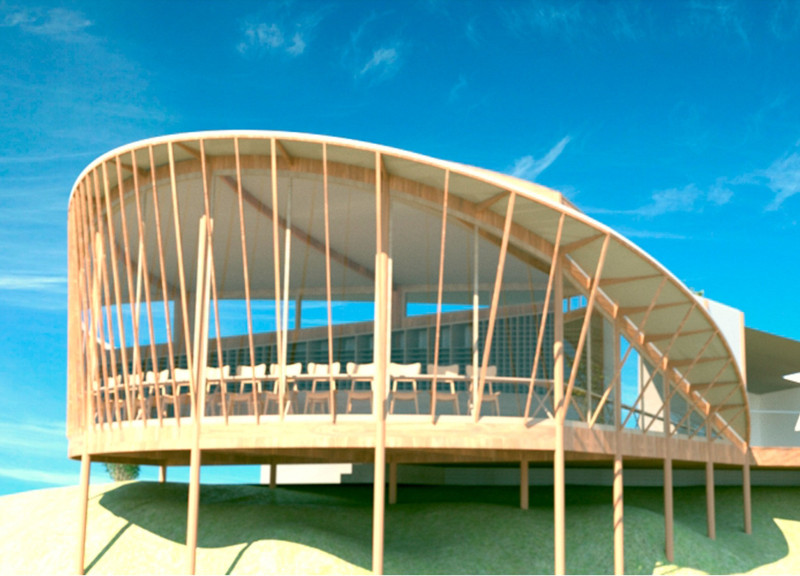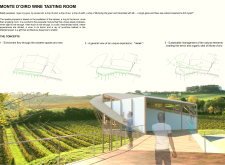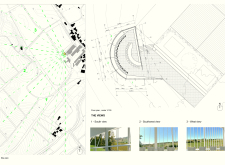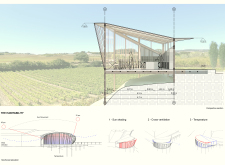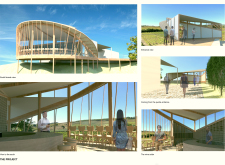5 key facts about this project
The primary function of the tasting room is to host private events and public wine tastings. It is strategically laid out to accommodate these activities while providing an inviting and educational atmosphere. Visitors are encouraged to appreciate both the architectural design and the local wines, fostering an understanding of the connection between the two.
Spatial Arrangement and Materiality
The design features a fluid spatial arrangement that encourages movement and interaction. Open areas are combined with intimate spaces, creating varied environments for different group sizes and needs. The use of large glass walls provides unobstructed views of the vineyard, allowing natural light to permeate the interiors. This transparency is essential in reinforcing the relationship between the architecture and the surrounding landscape.
The material palette includes wood, glass, local stone, and metal. Wood serves both structural and aesthetic purposes, adding warmth and context to the building. Glass is utilized extensively for its transparency and ability to connect the interior with the environment. Local stone is employed in flooring and walls, grounding the structure in its geographical context. Metal elements contribute to the structural integrity while maintaining a sense of lightness. These materials work collectively to form a cohesive design that aligns with the project's goals of sustainability and environmental harmony.
Innovative Design Approaches
One significant approach in this project is the emphasis on sustainability through passive design strategies. Natural ventilation solutions have been incorporated to maximize comfort and reduce reliance on mechanical systems. Operable windows and strategically placed overhangs work together to enhance airflow and regulate temperature within the building. This focus on sustainability not only contributes to energy efficiency but also enhances the overall visitor experience.
The design considers climate responsiveness and integrates the concept of terroir in its spatial configuration. The architectural form reflects the undulating landscape of the vineyard, reinforcing the connection between the tasting room and its setting. The open terrace areas encourage outdoor activities, allowing guests to engage directly with the vineyard.
By providing architectural plans, sections, and 3D visualizations, the presentation of the Monte D’Oiro Wine Tasting Room offers comprehensive insights into the design process and outcomes. For a detailed exploration of architectural ideas that inform this project, and to gain further information on the structural and aesthetic elements, readers are encouraged to review the architectural designs that illustrate its unique features and spatial dynamics.


